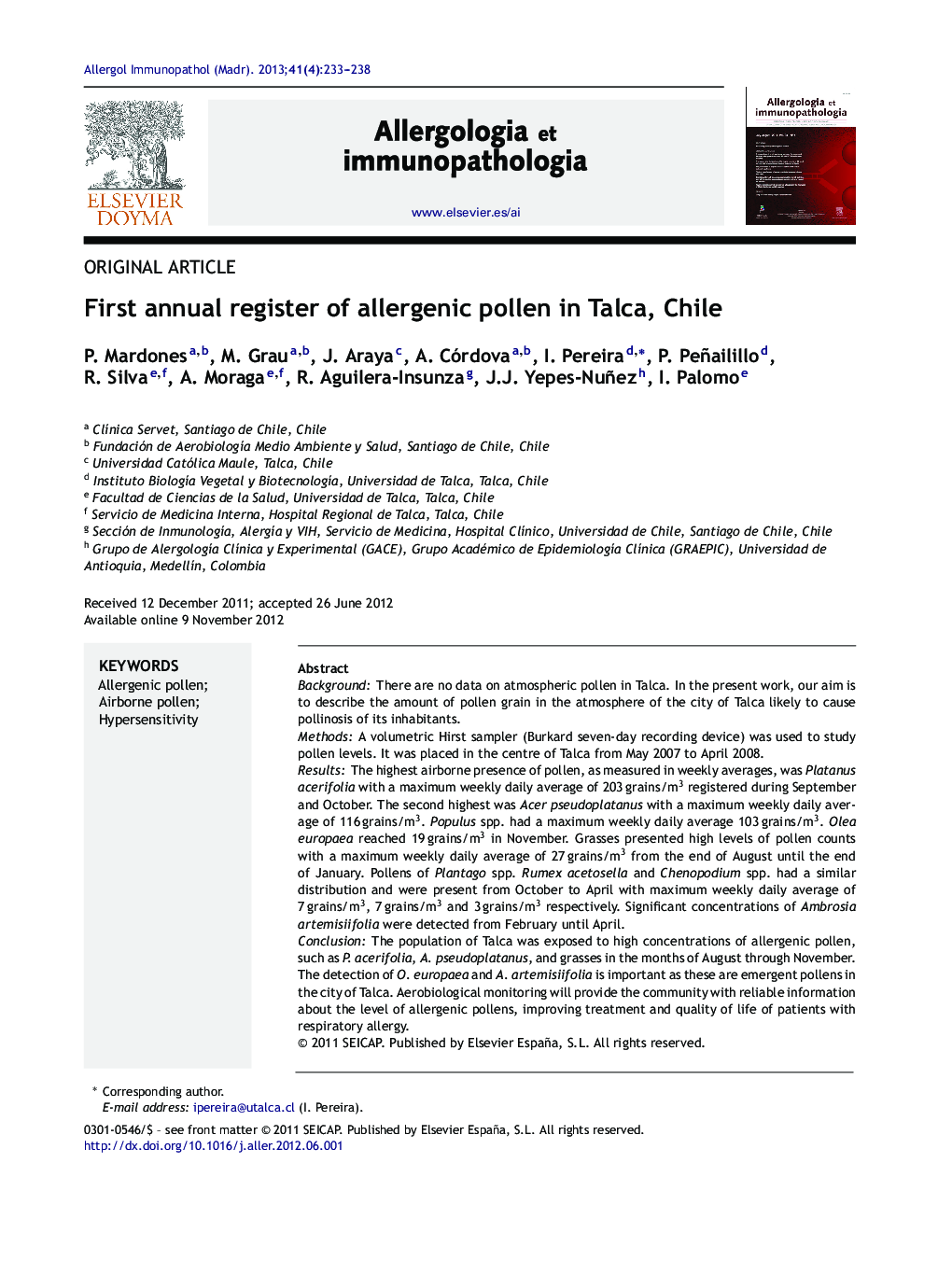| Article ID | Journal | Published Year | Pages | File Type |
|---|---|---|---|---|
| 3339714 | Allergologia et Immunopathologia | 2013 | 6 Pages |
BackgroundThere are no data on atmospheric pollen in Talca. In the present work, our aim is to describe the amount of pollen grain in the atmosphere of the city of Talca likely to cause pollinosis of its inhabitants.MethodsA volumetric Hirst sampler (Burkard seven-day recording device) was used to study pollen levels. It was placed in the centre of Talca from May 2007 to April 2008.ResultsThe highest airborne presence of pollen, as measured in weekly averages, was Platanus acerifolia with a maximum weekly daily average of 203 grains/m3 registered during September and October. The second highest was Acer pseudoplatanus with a maximum weekly daily average of 116 grains/m3. Populus spp. had a maximum weekly daily average 103 grains/m3. Olea europaea reached 19 grains/m3 in November. Grasses presented high levels of pollen counts with a maximum weekly daily average of 27 grains/m3 from the end of August until the end of January. Pollens of Plantago spp. Rumex acetosella and Chenopodium spp. had a similar distribution and were present from October to April with maximum weekly daily average of 7 grains/m3, 7 grains/m3 and 3 grains/m3 respectively. Significant concentrations of Ambrosia artemisiifolia were detected from February until April.ConclusionThe population of Talca was exposed to high concentrations of allergenic pollen, such as P. acerifolia, A. pseudoplatanus, and grasses in the months of August through November. The detection of O. europaea and A. artemisiifolia is important as these are emergent pollens in the city of Talca. Aerobiological monitoring will provide the community with reliable information about the level of allergenic pollens, improving treatment and quality of life of patients with respiratory allergy.
